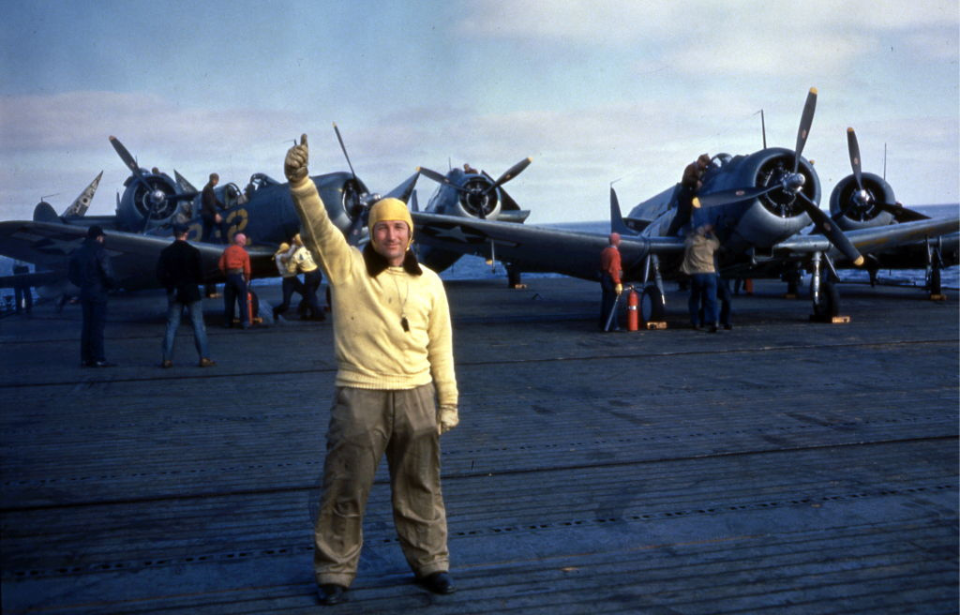Development of the Douglas SBD Dauntless
The Douglas SBD Dauntless’s design stemmed from the earlier Northrop BT. After the company was acquired by the Douglas Aircraft Corporation, construction of the SBD started. With modifications such as the incorporation of the Wright R-1820 Cyclone engine, the dive bomber was produced and became operational in mid-1939.
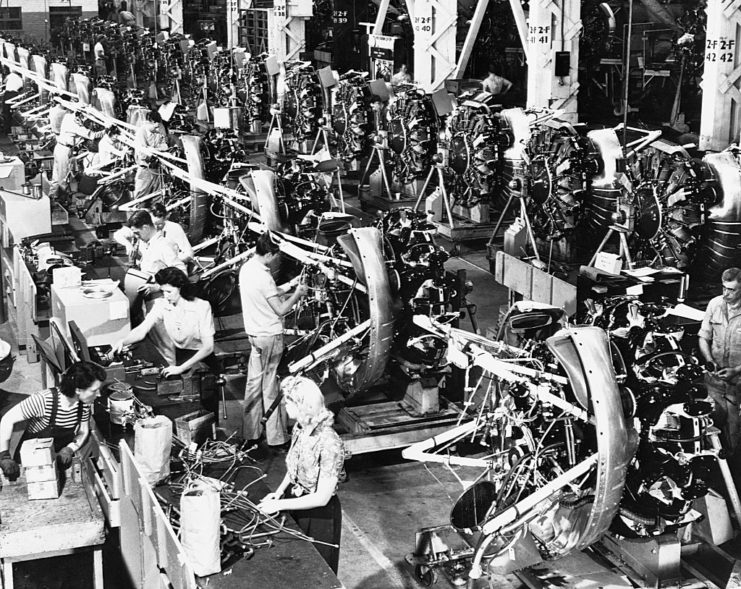
There were many variations of the SBD created by Douglas, including the -1 and -2, which were delivered to the Marine Corps and Navy, respectively. It was rather unusual for an aircraft designed to operate from an aircraft carrier, as it didn’t have folding wings. This was because the designers at Douglas wanted it to have more structural integrity.
The aircraft’s design was improved upon throughout World War II
Even though it had gained popularity as a dive bomber, modifications began on the SBD Dauntless as early as 1941. The SBD-3 incorporated enhancements such as improved armor, fuel tanks, and machine guns, while the -4 model focused on upgrading the aircraft’s electrical system. Additionally, some were converted for reconnaissance missions, and the SBD-5 boasted a stronger engine and increased ammunition capacity.
The final variant, the SBD-6, underwent similar enhancements. While both the Navy and Marine Corps utilized these variants, the US Army Air Forces repurposed the dive bomber, naming it the Douglas A-24 Banshee for their own operations.
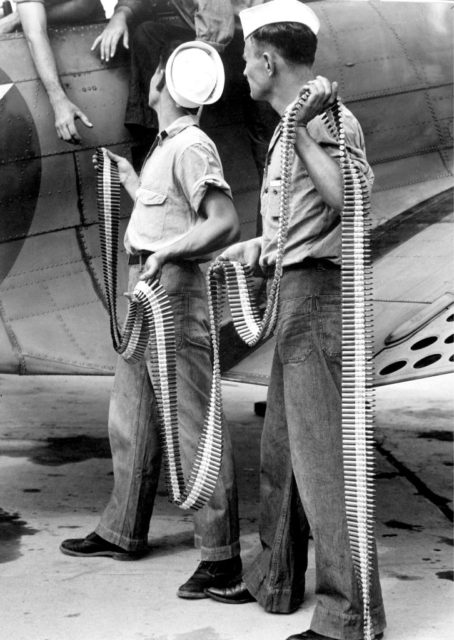
Overall, pilots had a favorable opinion of the SBD due to its manageable handling, formidable armament, and ability to stand up to enemy fighters. It boasted two forward-firing synchronized Browning M2s, along with two .3-inch flexible-mounted Browning M1919s in the rear and 1,020 kg of bombs.
The Douglas SBD Dauntless made waves at the Battle of Midway
What the SBD Dauntless is best known for is its actions during the Battle of Midway. Throughout the battle, pilots flying the dive bombers delivered targeted attacks that greatly damaged the Japanese aircraft carriers positioned in the area.
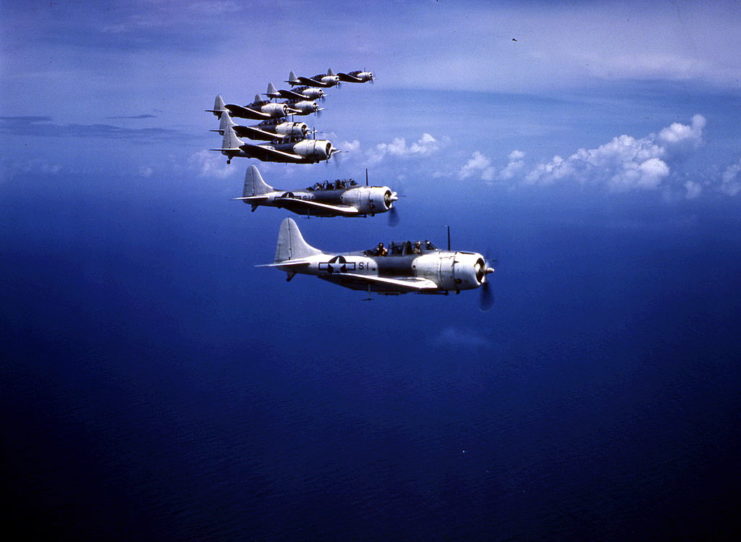
Between June 4-7, 1942, the Imperial Japanese Navy launched an attack against US naval forces near Midway Atoll, with the intention of causing some serious damage. Thanks to the work of cryptographers, however, the Americans were able to predict exactly when and where the attack would occur, allowing them to inflict a forceful blow, instead of taking unexpected damage.
A number of SBD squadrons flown by naval aviators were launched on the first day, disabling the carriers Akagi, Kaga and Sōryū in only six minutes.
An alternative outcome
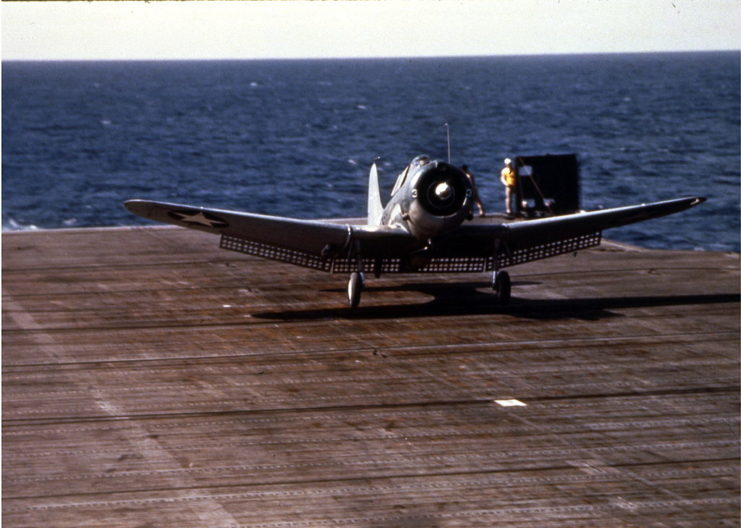
The impact of the SBDs during the Battle of Midway was huge. By eliminating every Japanese carrier in the attack, they played a crucial role in securing an American victory. Despite the presence of Japanese heavy cruisers, they could no longer launch their aircraft directly into battle.
The impact of the SBDs was so substantial that, after the battle, the dive bombers were given the nickname, “Slow But Deadly,” a clever reference to their initials.
Continued use of the Douglas SBD Dauntless
While the SBD Dauntless is generally considered to be one of the most important aircraft flown in the Pacific Theater, it saw use in other aspects of the Second World War. Along with seeing action during the Guadalcanal Campaign and the Battle of the Philippine Sea, the dive bombers were also flown during the Allied landings in North Africa and targeted attacks on German ships throughout Operation Leader.
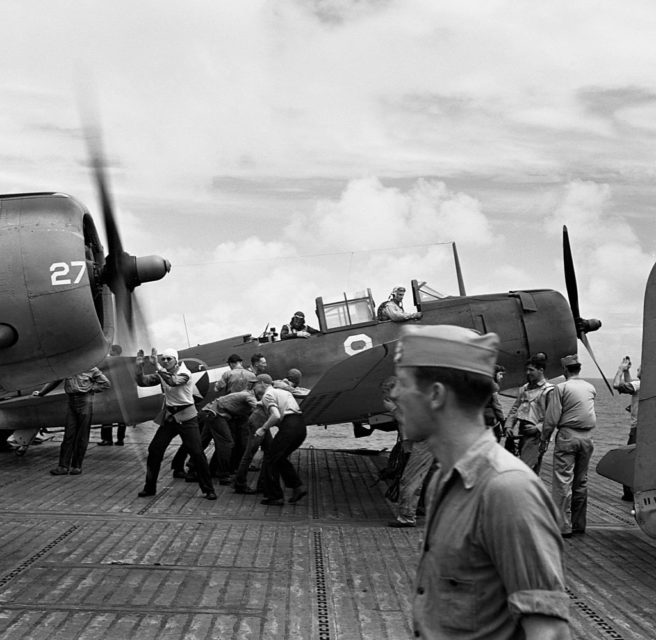
More from us: Northrop F-89 Scorpions Once Carried Nuclear Weapons to Combat Soviet Bombers
New! Want to become a trivia master? Sign up for our War History Fact of the Day newsletter!
As the war came to a close, the SBD was transitioned out, in favor of the Curtiss SB2C Helldiver, despite the fact pilots preferred the trusted aircraft. They viewed the SB2C as a “Big-Tailed Beast,” which didn’t produce the same finesse as the SBD. Other countries in possession of the dive bomber continued to fly it sparingly. By the time it was officially retired, it had left behind a memorable legacy.
